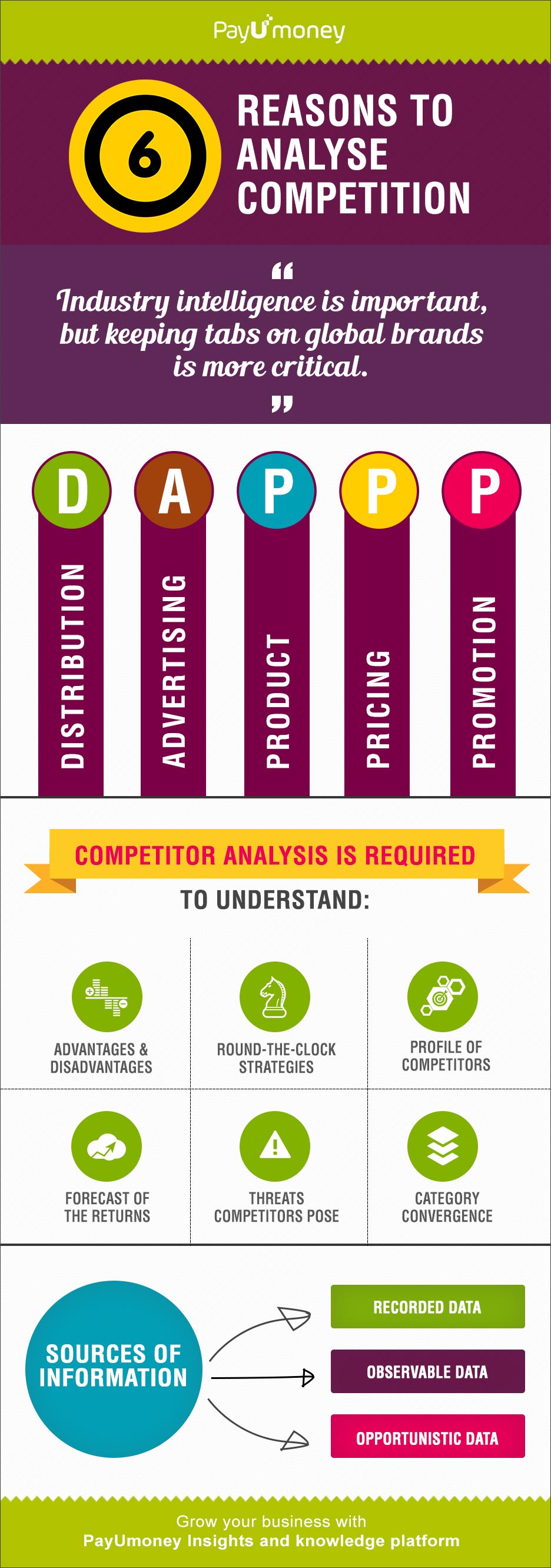The Importance of Competitor Analysis

Analyzing your competition plays a vital role in shaping your company’s strategies. It determines your strength and shortcomings within the market. It gives your business a distinct advantage from traditional and non-traditional competition. While analyzing, you can exploit any weakness that belongs to your competition.
However, it becomes difficult to compete from a new competition if you fail to understand a broader competitive space, where a non-traditional brand constantly fight to capture consumer’s mind and space.
Here are six reasons why you should look beyond your own industry while analyzing your competition:

The first step is to identify the process of doing competitor analysis. You can either analyse market from the customer’s point of view or you can group competitors according to their marketing approach.
The strategy to analyze competition revolves around establishing your potential competitors while exhibiting the product life cycle. It aims to specify the points which sets you apart from your competition. Competitive strategy usually fall into:
- Distribution
- Advertising
- Product
- Pricing
- Promotion
Competitor Analysis is required to understand:
Advantages & Disadvantages: One of the major reason for competitive analysis is to comprehend the strengths and weaknesses of your competition.
Past, Present & Future Strategies: Analyzing your competitors helps you formulate effective strategies for your company. Knowing where you stand in the market provides you early warning to take immediate steps in order to streamline your internal and external communication.
Objective & Profile of Competitors: Effective competitor analysis reveal the objective of your competitors, thereby helping you learn the best practices from diversified segment.
Forecast of the Returns: You learn from the success and failure of other brands. This analysis establishes the reasons behind failure of unsuccessful companies, thus helping you to forecast key assets and skills needed to beat your competition.
Threats Competitors pose: While analyzing your competition, you identify threats and challenges your competitors brings in the eco-system. It helps you fortify your company’s strategy against the competition.
Category Convergence: Brands today are offering products across variant segments. Today brands are competing in segments where they have been historically absent. Hence, perception that consumers holds about your brand plays a prominent role to define competitive benchmark.
Sources of information for Competitor Analysis:
Recorded data: It includes data which is published externally such as annual report, brochures, newspaper articles and press releases.
Observable data: It is collected from several sources such as pricing, promotions and patent applications.
Opportunistic data: This kind of data involves exclusive planning. It is basically derived from customers, suppliers, seminars and conferences.
Source: http://blog.payumoney.com











